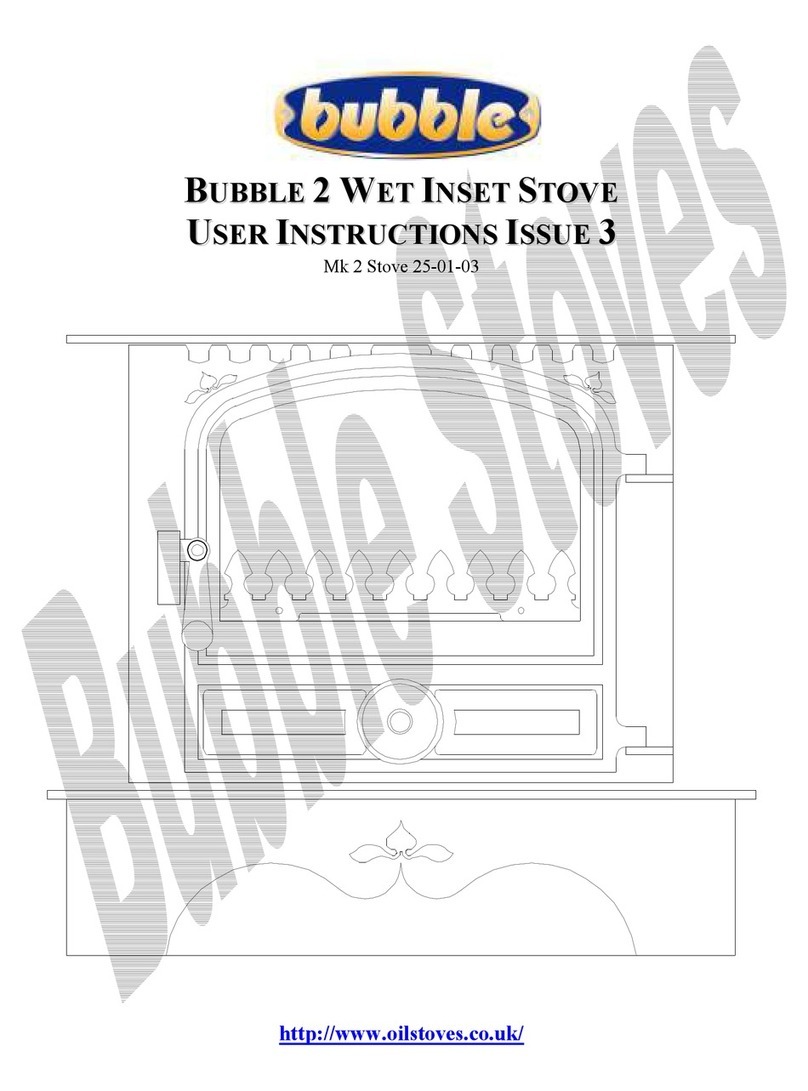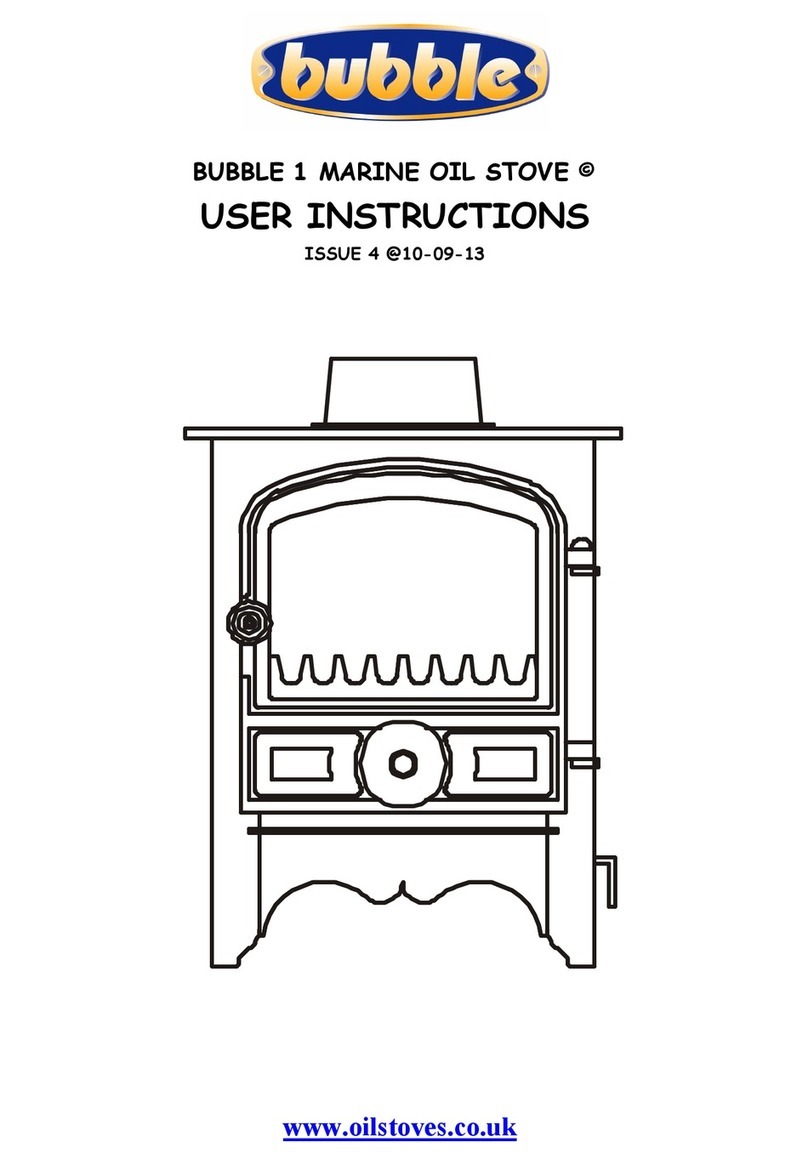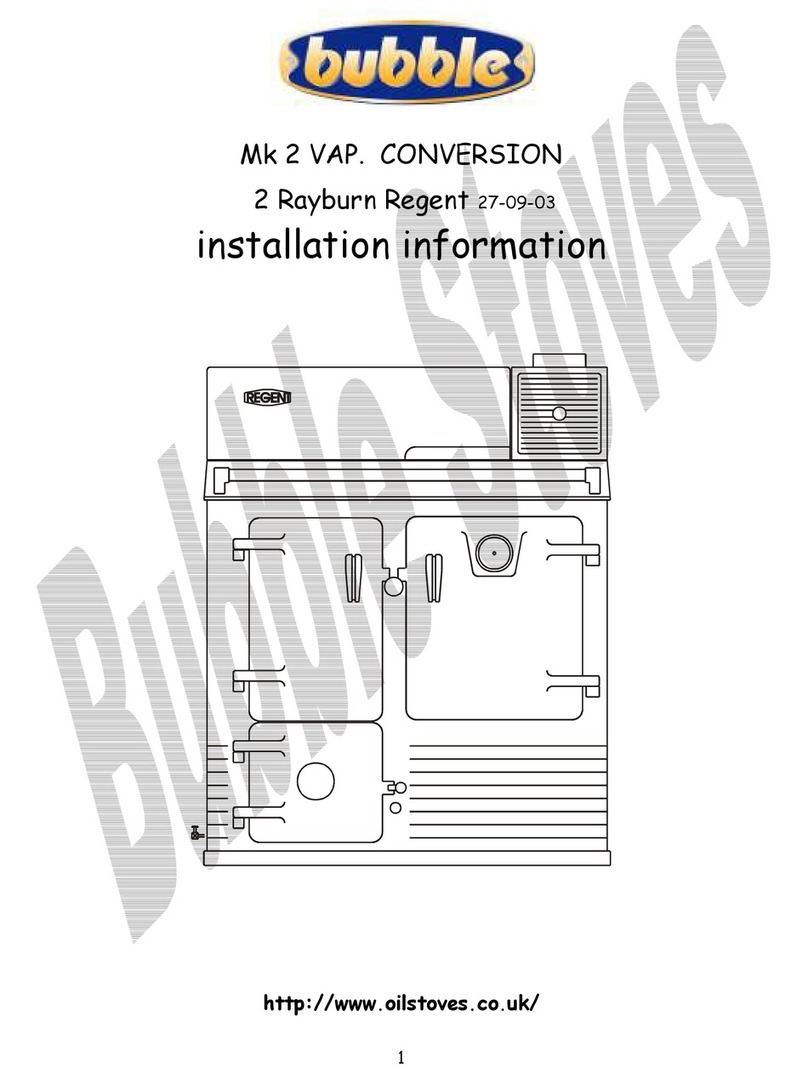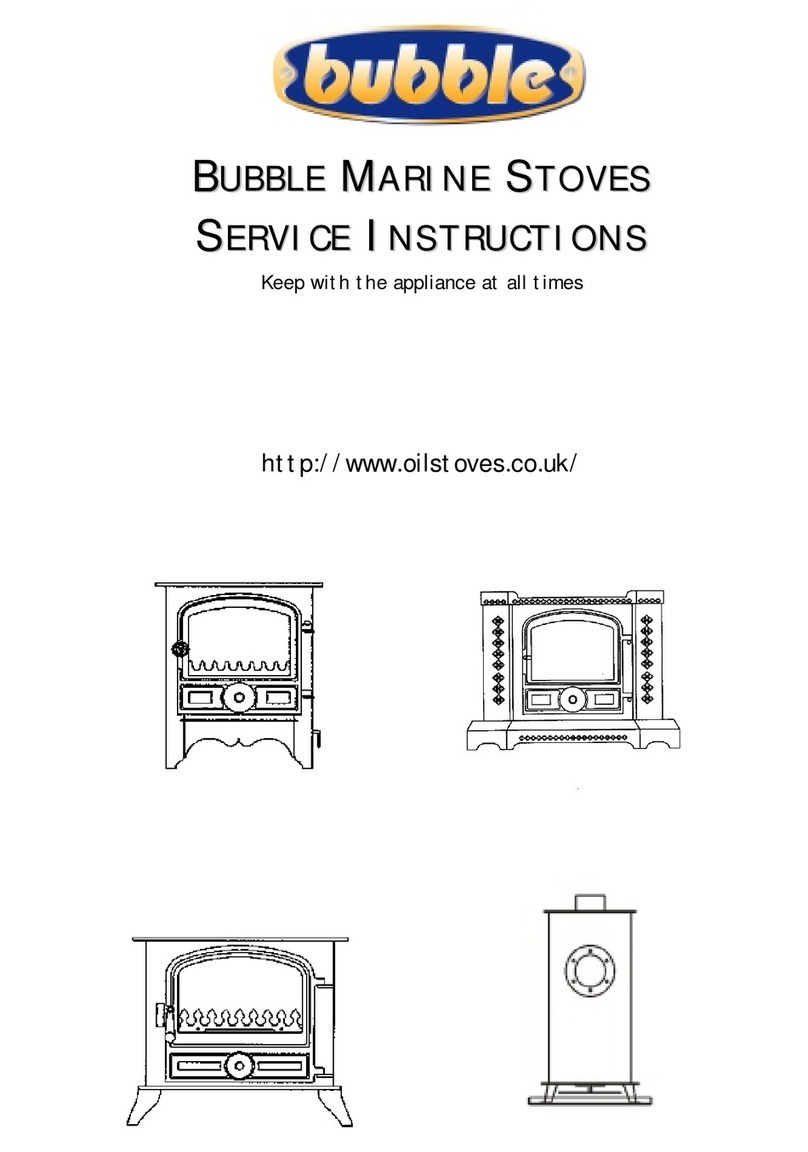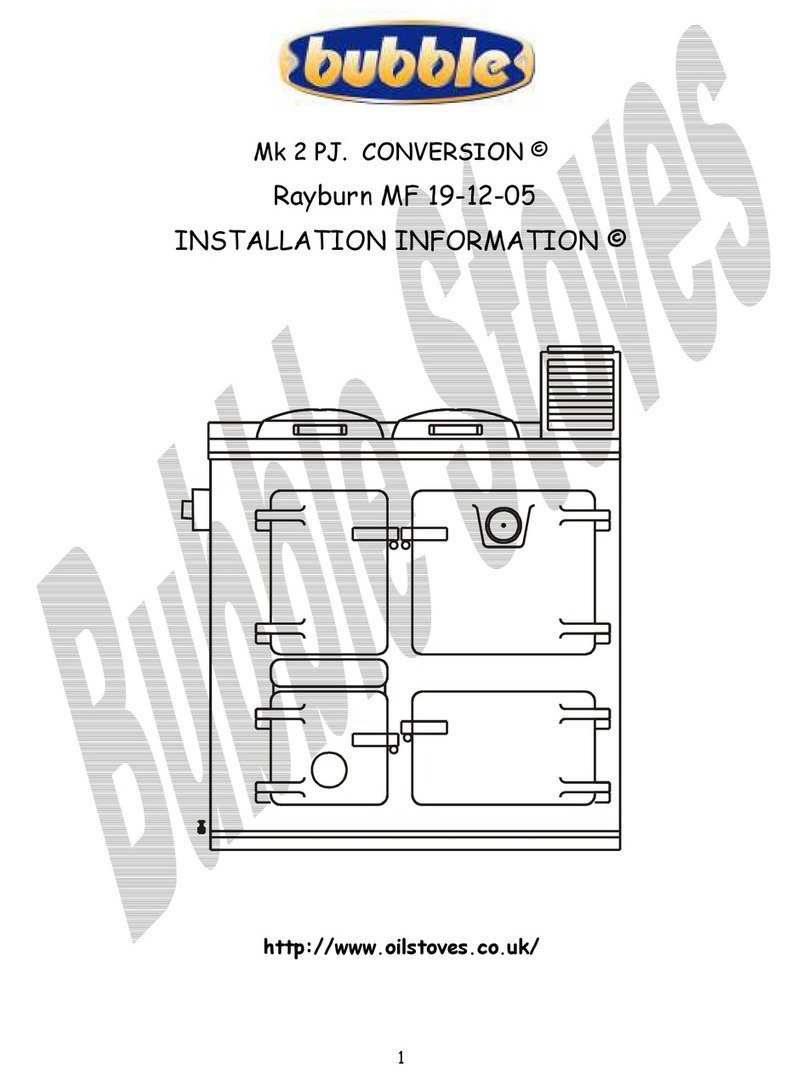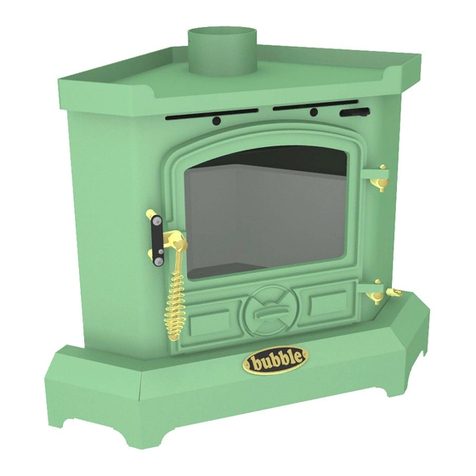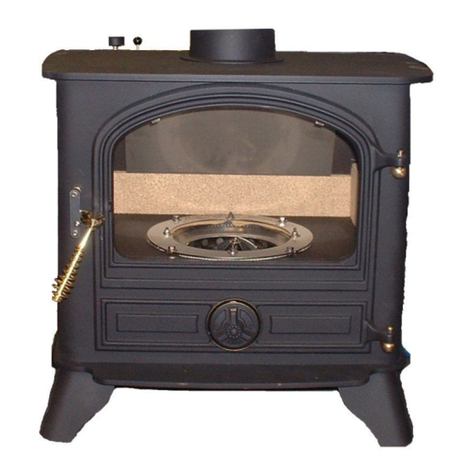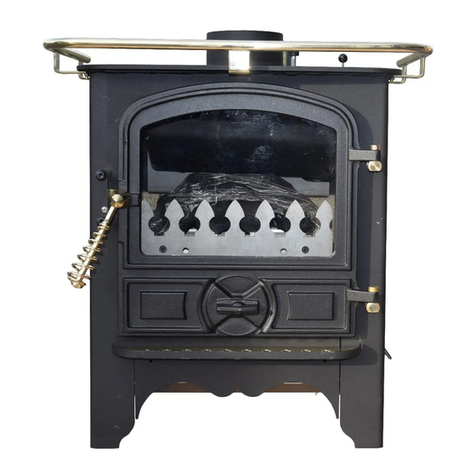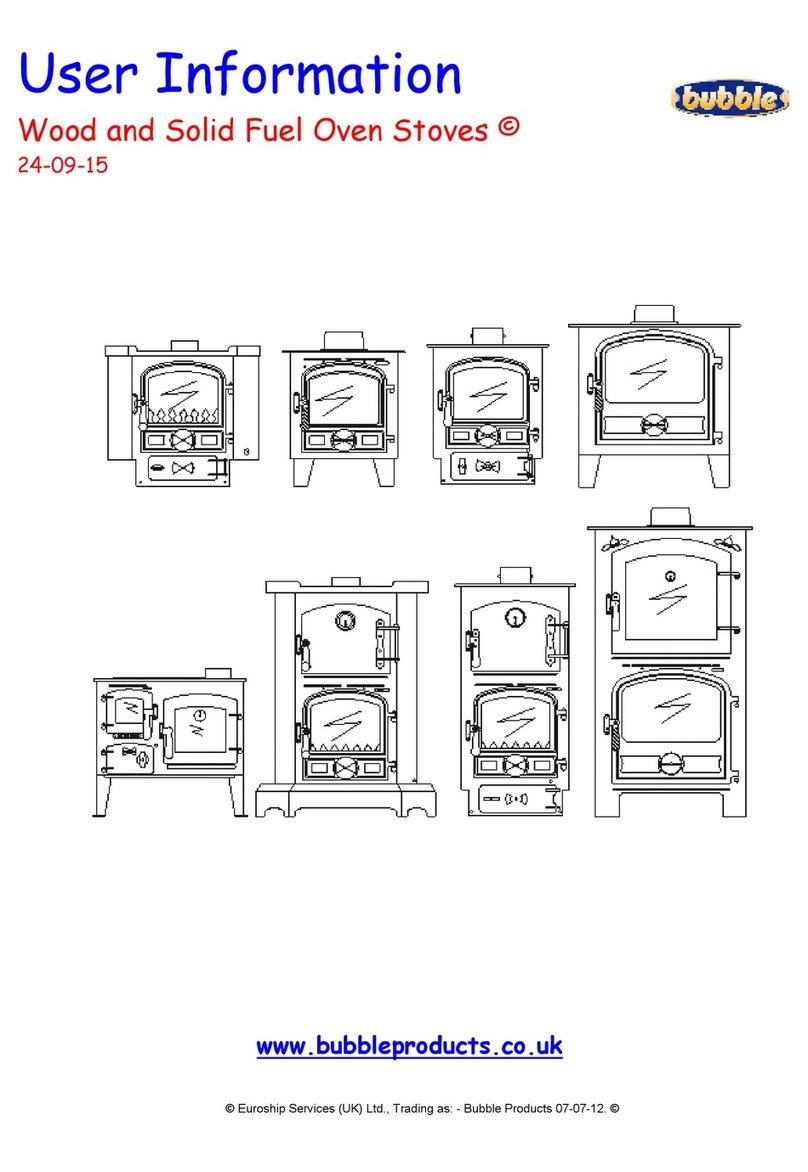
2
I
IN
ND
DE
EX
X
1-0 INTRODUCTION ...................... 2
1-0-1.
W
ARNINGS
............................................................... 2
1-0-2.
G
ENERAL
I
NFORMATION
A
BO T
T
HE
S
TOVE
. ...... 3
1-0-3.
S
PACING
F
ROM
C
OMB STIBLES
. ............................ 3
1-0-4.
F
IREG ARDING
. ................................................ 3
1-0-5.
W
ARNING
. ............................................................... 3
1-0-6.
D
OOR
G
LASS
. ........................................................... 3
1-0-7.
F
ASTENING
D
OWN
. ................................................ 3
2-0 OUTLINE OF CHIMNEY PROBLEMS . 3
2-0-1.
D
OWNDRA GHTING
......................................... 4
2-0-2.
A
TMOSPHERIC CONDITIONS
. .......................... 4
2-0-3.
S
MMARY
O
F
C
HIMNEY
P
ROBLEMS
................ 4
2-0-4.
M
IN
C
HIMNEY
H
EIGHT
F
OR
H
IGH
F
IRE
. .............. 4
2-0-5.
M
INIM M
H
EIGHT
F
OR
L
OW
F
IRE
R
NNING
...... 4
3-0 FUEL SUPPLY PROBLEMS ............. 4
3-0-1.
W
AXING
.................................................................. 4
3-0-2.
C
HANGING
O
IL
P
RESS RE
A
T
T
HE
S
TOVE
. .......... 5
3-0-3.
P
OOR OIL FLOW PROBLEMS
. .................................... 5
3-0-4.
O
IL FEED SET P
. .................................................... 5
3-0-5.
O
IL LINE
................................................................. 5
4-0 HOW IT WORKS ...................... 6
4-9.
T
HE COAL KIT
.............................................................. 6
4-
10.
D
ESCALING CONTROL
.............................................. 6
4-11.
S
TOVE
C
OMPONENTS
................................................ 6
5-0 RUNNING THE STOVE ...............
5-1.
O
IL
C
ONTROL
V
ALVE
D
ETAILS
................................... 7
5-2.
L
IGHTING
. ................................................................... 7
5-3.
S
TOVES WITH BOILERS
.............................................. 7
5-4.
C
ONTROLS ON
S
TOVES WITH BOILERS
..................... 7
6-0 FAULT FINDING ...................... 8
W
ATER
C
ONTAMINATION
.................................................. 8
6-1.
R
ACING
......................................................................... 8
6-2.
F
L E VAC M
.............................................................. 8
6-3.
B
RNER R NS SOOTY
. ................................................ 8
6-8.
O
IL SMELLS
................................................................. 9
6-9.
D
EFLOODING A FLOODED POT
.................................... 9
6-10.
O
IL LEAKS
.................................................................. 9
.0 ROUTINE MAINTENANCE............ 9
8-0 WARRANTY ............................ 9
1-0 INTRODUCTION
1. As its name implies, the Corner Bubble has been
designed to fit into confined spaces.
2. A great deal of effort has gone into the
development of this stove and it has been
specifically designed for the narrow boat user.
3. The triangular shape allows the stove to be
fitted with minimal use of space, allowing easy
access past it, better integration with internal
decor and designed as an integral part of the boat,
not just another add on.
4. The triangular base acts as a built in drip tray
and positioning device to allow adequate clearances
for air to circulate around the heater panels and
convert heat into the boat.
5. The top of the stove can be used for warming and
cooking.
6. The stove can also be supplied with or without a
coal kit.
7. Standard deck flanges and traditional chimney
extensions can used above deck providing a suitable
anti downdraught terminal is fitted.
8. The dry stove will provide space heating via
convection together with limited cooking facilities
on the top plate.
8a. The boiler version will provide the same with the
addition of hot water and central heating.
9. We have found from our now extensive
experience of existing installations that in most
cases, existing Bubble 1 users only have to run their
stoves on the lowest setting, even through the very
coldest of weather.
With this in mind and the increasing cost of oil, we
have designed the corner bubble using a more
economical burner which will run at 4ccs (.24 of a
litre per hour) on minimum firing rate and 10ccs (.6
of a litre per hour) on maximum firing rate equating
to a consumption per 24 hours continuous running of
5.76 litres low fire and 14.4 litres high fire.
10. The stove incorporates a combustion air
restrictor (C.A.R.) as opposed to the more
traditional swinging barometric damper and also
features a front mounted oil control valve with easy
access to the control knob.
1-0-1.
W
ARNINGS
1. Never try to relight a hot stove; wait until it has
cooled down, hot oil vapour is explosive.
2. Never try to light a flooded pot, when attempting
to light a stove make sure that the pot is not
flooded with oil, by looking into the base of the
burner.
If it is flooded remove the excess oil as per
instructions in the fault finding section.
